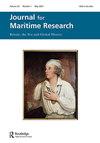外交事务中的丹麦海军军官:18世纪中期欧洲的知识转移
Q3 Arts and Humanities
引用次数: 0
摘要
1756年,两名丹麦海军军官进入法国服役。在18世纪的丹麦,这是一种常见的做法,目的是训练军官,收集海军建设、导航、管理和食品方面的情报。法国军舰的详细描述可以在两位军官的报告中找到,这些报告保存在哥本哈根的丹麦国家档案馆。与负责造船的建造委员会的议定书一起,很明显,船舶设计的各个方面从法国转移到丹麦海军。本文章由计算机程序翻译,如有差异,请以英文原文为准。
Danish naval officers in foreign service: knowledge transfer in mid-eighteenth-century Europe
ABSTRACT In 1756, two Danish naval officers went into French service. This was a common practice in eighteenth-century Denmark, which aimed to train the officers and to gather intelligence on naval construction as well as navigation, administration, and victualling. Detailed descriptions of French warships can be found in the reports from the two officers, which are kept in the Danish National Archives in Copenhagen. Together with the protocols from the Construction Committee, responsible for shipbuilding, it is evident that aspects of ship designs were transferred from the French to the Danish navy.
求助全文
通过发布文献求助,成功后即可免费获取论文全文。
去求助
来源期刊

Journal for Maritime Research
Arts and Humanities-History
自引率
0.00%
发文量
0
期刊介绍:
The Journal for Maritime Research ( JMR ), established by the National Maritime Museum in 1999, focuses on historical enquiry at the intersections of maritime, British and global history. It champions a wide spectrum of innovative research on the maritime past. While the Journal has a particular focus on the British experience, it positions this within broad oceanic and international contexts, encouraging comparative perspectives and interdisciplinary approaches. The journal publishes research essays and reviews around 15-20 new books each year across a broad spectrum of maritime history. All research articles published in this journal undergo rigorous peer review, involving initial editor screening and independent assessment, normally by two anonymous referees.
 求助内容:
求助内容: 应助结果提醒方式:
应助结果提醒方式:


